The inland cultivation of a global culinary curiosity is gaining ground
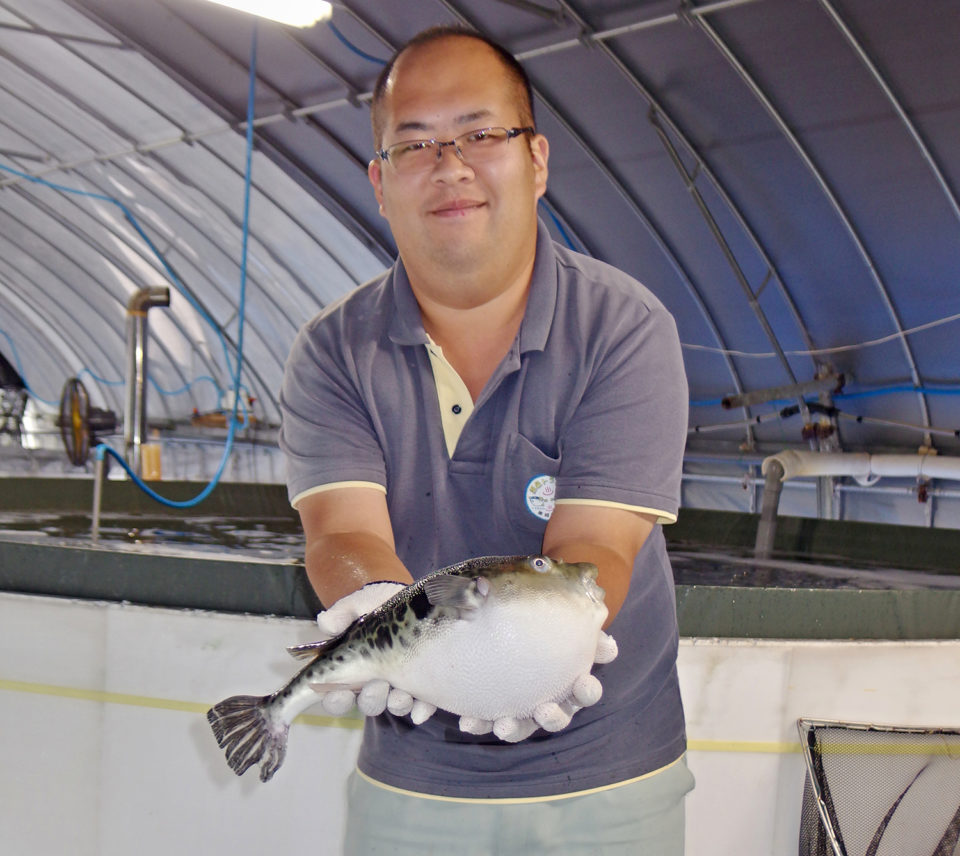
In a mountainous area of Tochigi Prefecture north of Tokyo, tiger puffers are being farmed inland with low salinity water from local hot springs. Yumesozo, the company that cultivates the fish, sells 25 tons a year to around 150 local stores.
Based in the rural town of Nasu-karasuyama, Yumesozo is the first in Japan to successfully farm tiger puffers. The technique of cultivating the species (Takifugu rubripes) in hot spring water was invented to help revitalize the town. Now it’s spreading to other areas of Japan.
“People in Nasu-karasuyama began moving to the cities to work,” Yumesozo President Katsuaki Noguchi told the Advocate. “This reduced the town’s population considerably. Japan’s declining birthrate and ageing population are also significant issues. I was born and raised in Nasu-karasuyama and wondered if there was anything I could do to revitalize it.”
While running his own environmental consulting firm, Noguchi began investigating Tochigi Prefecture’s chloride springs as a possible resource to develop Nasu-karasuyama. He found that the Yamizo-Sanchi mountain range, where Nasu-karasuyama is located, contained underground seawater at about 500 meters below ground level. As he researched the water’s composition, he discovered that it contained elements such as sodium and potassium, with no sulfur or other noxious minerals.
“It became clear that the water could be used to cultivate fish,” said Noguchi. “Its salt concentration is around 0.9 to 1.2 percent, about one-third that of usual seawater. I set up Yumesozo and began a series of rearing experiments with filefish, sea bream, flatfish and tiger puffer. They all grew well but after comparing profitability and species value, tiger puffer was the obvious choice.”
Noguchi wondered if tiger puffer were particularly suited to hot spring water, so he contacted Prof. Toyoji Kaneko, a fish physiology specialist who has spent many years researching fish osmoregulation at the University of Tokyo’s Graduate School of Agricultural and Life Sciences.
“After receiving requests from universities, I’d decided to explore a new type of aquaculture – land-based farming of marine fish in low-salinity environments – when I was contacted by Yumesozo,” he said.
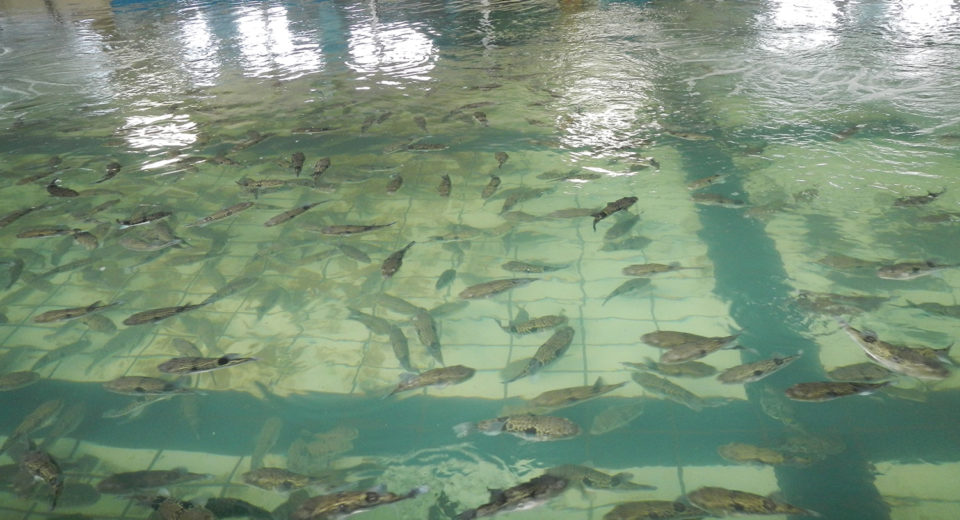
The natural habitat of tiger puffer is seawater, which has a salt concentration of around 3.5 percent. Tiger puffer reduce that salt density to around 0.9 percent by absorbing water through their gills. Kaneko told Noguchi that because the salt density of the hot spring water in Nasu-karasuyama is also around 0.9 percent the fish do not need to burn calories to adjust the salt content in their bodies.
And thanks to the amount of nutrients in the water, they also grow bigger than those farmed at sea, while hot spring water has very low pathogen levels, making it difficult for the fish to become ill. There is also no winter chill to slow down their growth, as the hot spring water is used to heat the rearing tanks via a heat exchanger.
“The temperature of the water in our tanks is kept at around 22 degrees-C or 72 degrees-F,” said Noguchi. “The hot spring water travels through the heat exchanger before returning to the hot spring facilities. About twice a year, we exchange the water we use to farm the tiger puffer but because we have a closed circulation system, it isn’t discharged anywhere. Using heat from the Earth’s interior is affordable, and it’s a sustainable way of reducing dependence on fossil fuels,” he said.
The biggest challenge in land-based farming is electricity costs, which are needed to circulate the water, and there are additional expenses for fuel and boilers – unless you are using hot spring water.
Tiger puffer are one of Japan’s top delicacies, despite (or because of) the fact that they usually contain a deadly neurotoxin called tetrodotoxin. This requires the fish to be prepared by licensed chefs. But the fish farmed by Yumesozo are nontoxic.
“Tetrodotoxin is produced by bacteria,” said Kaneko. “High concentrations accumulate mainly in organs such as the liver or ovaries, but these won’t necessarily be poisonous in every fish. Tetrodotoxin doesn’t accumulate in tiger puffer reared in hot spring water but their liver and ovaries cannot be supplied to shops at present.”
Noguchi also carried out research to improve the taste of tiger puffer meat, which can become mild and watery because of the low salt concentration of hot spring water. In order to overcome this, he transferred the fish to artificial seawater the day before shipment and killed them by draining their blood from above the gills and the base of the tail. He found that the fish, which had been accustomed to lower salt concentrations of the hot spring water, injected amino acids into their muscle tissue to cope with the sudden change of osmotic pressure caused by the increase in salinity. This made their taste stronger and more delicious, he said.
Yumesozo is now focusing on promoting tiger puffer farming. To date, firms that have franchise contracts with the company operate in 18 locations across Japan, said Noguchi. Land-based farming is also proving popular, with the tiger puffer growing just as well as in ordinary seawater. Although it takes a year and a half for tiger puffer raised in sea farms to be ready for market, those grown in hot spring water reach market size in just one year.
“This is because we’re farming the fish in a low-salinity environment and increasing heat in winter,” said Noguchi. “We can also guarantee a high production volume and yields of 75 to 80 percent, thanks to ozone disinfection. The biggest challenge in land-based farming is electricity costs, which are needed to circulate the water, and there are additional expenses for fuel and boilers – unless you are using hot spring water.”
Farming fish on land offers protection against natural disasters such as tsunamis and has fewer environmental impacts, according to Kaneko.
“It’s easy to control water quality, and it allows land-locked regions to play a part in aquaculture. I think that land-based marine fish farming could become more mainstream, and we may see huge developments in future involving land-based farming and hot spring water,” he said.
Follow the Advocate on Twitter @GAA_Advocate
Now that you've reached the end of the article ...
… please consider supporting GSA’s mission to advance responsible seafood practices through education, advocacy and third-party assurances. The Advocate aims to document the evolution of responsible seafood practices and share the expansive knowledge of our vast network of contributors.
By becoming a Global Seafood Alliance member, you’re ensuring that all of the pre-competitive work we do through member benefits, resources and events can continue. Individual membership costs just $50 a year.
Not a GSA member? Join us.
Author
-

Bonnie Waycott
Bonnie Waycott is a freelance writer specializing in aquaculture development and fisheries management, with a particular focus on Japan. She has a keen interest in the recovery of aquaculture in Tohoku, following the Great East Japan Earthquake and Tsunami of March 2011.
Tagged With
Related Posts
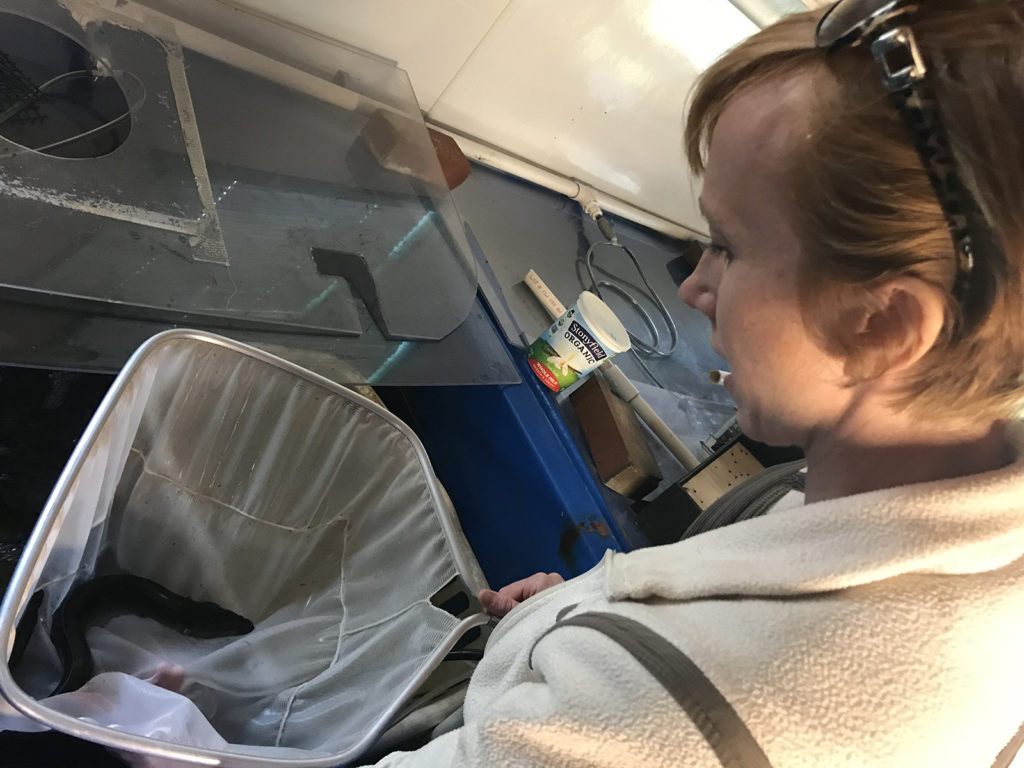
Innovation & Investment
American Unagi brings eel farming back ‘home’
Sara Rademaker launched American Unagi to shift eel farming to American soil, where the eels are from. Why? Because of the novelty, and because she saw an opportunity to do things better.
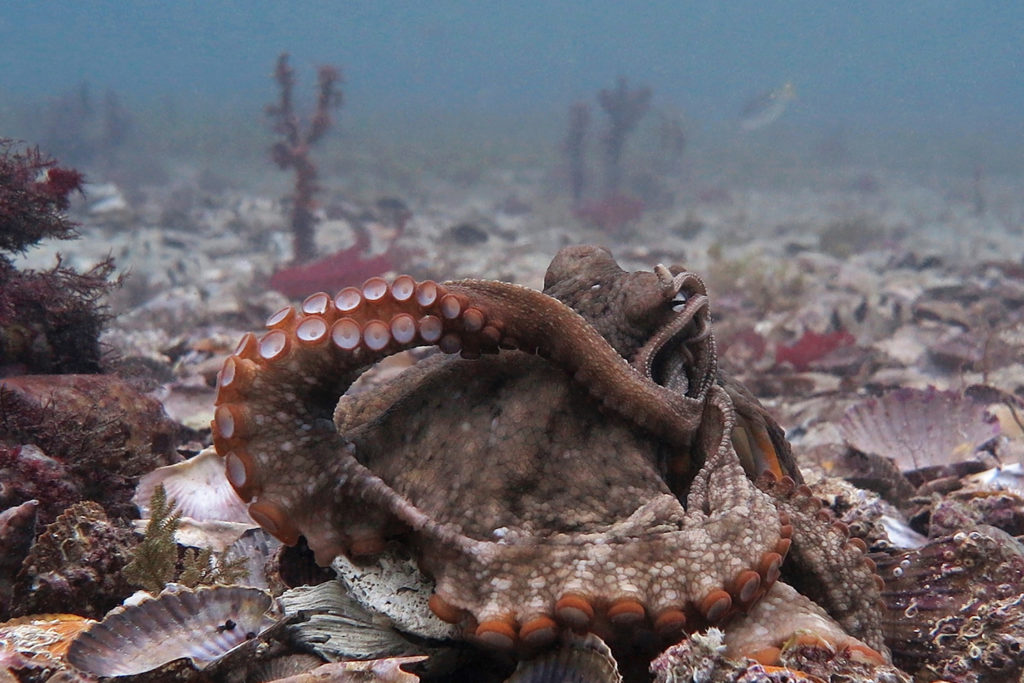
Intelligence
Octopus aquaculture – unethical or the next Big Thing?
A team of scientists recently made the case against octopus farming, but others believe in its potential. What lies behind this emerging aquaculture opportunity?
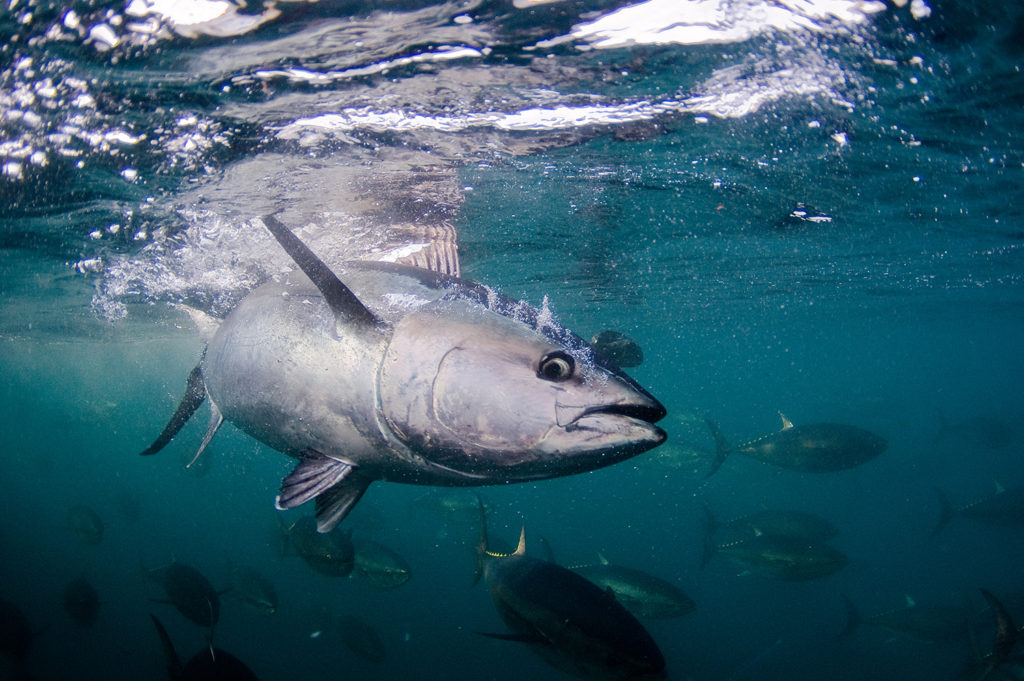
Innovation & Investment
Japan hopes aquaculture can save bluefin tuna
Bluefin tuna may be the most prized fish in the ocean. If hon-maguro sashimi is to remain chic, closed-cycle aquaculture may help keep it on menus.
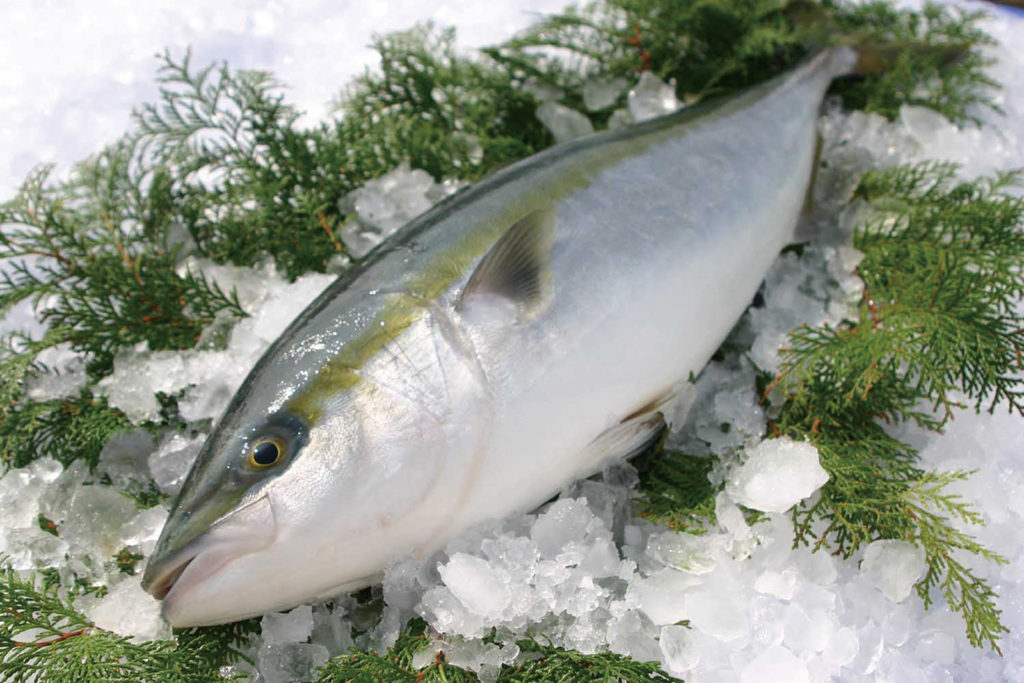
Innovation & Investment
Japan to set sustainability efforts in Olympics spotlight
With all eyes on Japan for the 2020 Olympic Games, leading advocates for responsible aquaculture there see a key opportunity to make stronger sustainability commitments.

